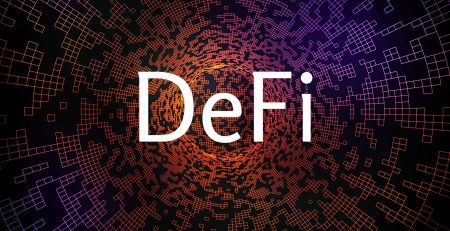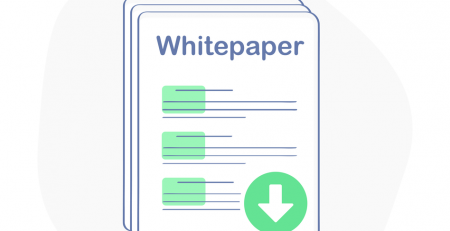What is fundamental analysis and what factors should we consider?
What is fundamental analysis? In all financial markets, both traditional and emerging markets such as digital currencies, there are several general ways to analyze the market situation and decide to buy or sell, one of the most important of which is fundamental analysis. In this article, we define fundamental analysis and compare it with other types of analysis
What is fundamental analysis?
science of evaluating economic, financial, and other variables about an asset that can determine its current and probable future value.
In other words, in fundamental analysis, the analyst examines and analyzes the conditions of a project or company from different aspects and follows its important news and events.
Analyzing all aspects and factors affecting a project or company in order to identify its intrinsic value and potential is known as the definition of fundamental analysis.
Deadly poison water
These two have one color and one smell; A thirsty and illiterate person may choose to poison himself because the bottle is bigger and kill himself. Fundamental analysis helps to distinguish water from toxins.
For example, if the news of bitcoin acceptance is published by Amazon and someone thinks that the price of bitcoin will rise and buy bitcoin, she has actually used some kind of fundamental analysis to decide whether to buy bitcoin.

Types of analysis used in financial markets
In financial markets, in addition to fundamental analysis, two technical analyzes and sentiment analysis are also used.
In technical analysis, the price trend of a commodity, stock or currency, as well as various indicators can be used to predict the price trend.
In this type of analysis, to evaluate the market, we only need to study the movement of prices and do not consider any other criteria.
Sentiment Analysis also uses various tools to examine and analyze the dominant feelings of people in the community towards those services or platforms. This type of analysis is very similar to fundamental analysis.
Using different tools in investments can reduce the investment risk and increase the probability of the investor’s success.
Comparison of fundamental analysis in the stock market and the digital currency market

Although some believe that investing in the digital currency market is very similar to the stock market, it should be noted that the application of fundamental analysis in these two markets is fundamentally different from each other in different ways.
When we talk about the stock market, you are investing in the shares of a real company that reports quarterly income, returns and profits as indicators of the company’s growth.
This can be a good
indicator for an investor of what the future price increase will depend on and what their stock status will be in the future.
Therefore, fundamental analysis in the stock market includes a review of earnings, company performance, board of directors, etc. If, as you will see below, the factors examined in this analysis in the digital currency market are completely different.
Factors influencing the fundamental analysis of digital currencies

In any investment, the first point to consider is the purpose of the investment, which can be divided into three categories: long-term, medium-term and short-term.
The experience of investing in various fields shows that it may be possible to make a good profit in short-term investments without considering the fundamental analysis of the project and relying only on technical analysis, but if the goal is medium-term and especially long-term investment, in addition On technical analysis, it is necessary to examine the project from a fundamental point of view. Emotion analysis can also be used as a useful tool in any type of investment.
As we have said, in the fundamental analysis of digital currencies, the factors affecting the price are very different from other traditional assets such as stocks.
Here are some of the most important ones:
1. Market cap or total market value
Market Cap, the amount of which is specified for each digital currency on the Quinn Market Cap site, is the total amount of working capital of that digital currency in dollars, which is calculated as follows:
Total number of coins in circulation * Price of 1 unit of that coin = total market value
For example, the price per unit of bitcoins at the time of writing is $ 8,731, and the total amount of bitcoins in circulation on the Coinmarketcup website, called Circulation Supply, is 17,726,637 BTC. Therefore, the total amount of bitcoin capital is calculated as follows:
$ 154,771,267,647 = 8,731 * 17,726,637 = Market Cap (BTC)
Some people think that the price of a currency indicates its value in the market, while the parameter that determines the value of a currency against other currencies, and the site of CoinMarketCup also arranges different currencies based on it, MarketCop or the total available capital of that currency In the digital currency market.
As a general rule, the total amount of capital of a currency (market cap) directly affects the intensity of investment risk. The high market value of a project means that there is a large amount of capital in that project, and this can be one of the factors that reduce the risk of investing in that project.
But to make better use of this parameter, you can find projects that have similar technology and put them in a segment, then compare the amount of marketing risk in them by comparing the amount of market capitalization in them.
You can also find projects with similar applications, goals, and technologies, and measure the importance and share of a technology in the digital currency market by summing their market capitalization and comparing it to the total capital available in the digital currency market.
For example, by collecting a market for digital currencies based on privacy-oriented or private coins, you can get the total amount of capital in this field and compare it with the total capital in the digital currency market and get an overview of the status and importance of coins.
What are the advantages and disadvantages of having a low market?
One of the problems that can occur in currencies with low market cap is the possibility of market manipulation and severe price changes in the market. Since, for example, to double the price of a currency, its market cup must be doubled, in currencies with a low market cap, it is possible to increase the volume of capital by manipulating limited individuals and doubling the market cup, thus increasing its price. It can be considered as a negative point in projects with low market cap.
But if other parameters that are evaluated for a project indicate that the project is good, its low market copy means that the currency to increase the price by as much as, say, 50% to a smaller amount of capital compared to the currency that has more market cap Has, needs.
Despite all the information that can be obtained from MarketCup, we should know that MarketCop is just one of the parameters that should be considered in the fundamental review of a project, and by examining all the parameters together, we can talk about the potential for future growth of a project. Concluded.
In general, the lower the market value or total value of a digital currency, the higher the risk, but if it goes up, it is usually very profitable.
2. Volume of transactions
One of the most important parameters that a project must consider in fundamental analysis is its amount once in 24 hours or overnight. The volume equivalent to 24 hours is the amount of tokens shown during the 24 hours of buying and selling. Be sure to note that to check this parameter from the historical data section to access the volume of transactions in a recent month and the volume of transactions related to a recent month to be examined.
The trading volume in one day can change in different ways due to a news or rumor and return to normal in the coming days. But looking at the daily trading volume of a month, one can get a good view of the average daily trading volume of that digital currency.
The low volume of transactions creates the problem for you that if you buy that currency, since the volume of daily sales and sales is low, if you want to sell it, you will face a problem called liquidity problem.
If the price of a currency rises and the volume of its 24-hour transactions increases along with the price, it indicates that many people are buying and selling that currency and it is likely that the price will continue to rise. But if the price of a currency rises momentarily, but its trading volume changes very little, it indicates that a very small number of people have begun to buy and sell that currency, and this upward trend is likely to end very soon.

3. NVT parameter (network value relative to the amount of transactions
The ratio of the total value of the network to the volume of its transactions (the value of the network divided by the value of the total transactions) provides a parameter called NVT. This parameter can be obtained for any currency by dividing the value of its network (market copy or its total value) by the volume of its 24-hour transactions.
The purpose of calculating NVT is to be able to see the ratio of the total value of the network to the activities of the individuals participating in the network as investors.
If in a digital currency, marketup or total market value (total network value) is high and user activity (transaction volume) is low, the NVT parameter for that currency is high and a high of this parameter can be a sign of a downward price trend. It should be a currency.
The analysis of this parameter is that when the NVT parameter for a currency is high, it shows that the value of the network (Network Value), which is equivalent to its market copy, prevails over the traded volume. This often happens when the price goes up in a bubble and is unstable.
Based on the experimental data that have been observed in the market trend so far, it is possible to determine a threshold value for the division of high and low of this parameter:
Thus, if the value of the NVT parameter is less than 15, it can be one of the signs of an upward trend in the long-term analysis of the price of that currency, and if the NVT is more than 15, it can be a sign of a general downward trend in the market compared to other currencies.
The low NVT parameter means a small difference between the market cap and the volume of daily transactions. When the volume of daily transactions is high compared to the foreign exchange market, it means that the activity of investors in that currency is very high and can be considered as an upward signal and a buying position for investors can be identified in this way.
But I have to note that if necessary, it was not valid on a daily basis, and using different methods of assistant control, it is better to use the NVT parameter once in a month if it is used in the right size in 24 hours.
4. The cost-effectiveness of currency extraction (in digital currencies that can be extracted)
By comparing the price of extractable digital currencies (proof-of-work currencies) with the amount of cost required to extract them, another aspect of the potential growth potential of different projects can be explored.
If the cost of extracting a currency is not affordable compared to the price of that currency, the miners will not be willing to extract that currency, and as the miners extract digital currencies, their prices will enter a downward trend.
5. Check the FCAS parameter
The FCAS parameter recently displayed on the CoinMarketCup website is the rating of projects in terms of fundamentals, which is determined by considering various parameters.
This scoring is done relatively and comparatively between different projects. Criteria that influence this rating include: the activity of the users of a project and the performance of its programmers.
Scoring in the FCAS parameter is such that initially the scoring interval is considered to be 1000-100 and then this interval is divided into five categories as follows.
To better understand this parameter and how to divide it into these 5 categories, we will examine the 3 factors that are considered in this scoring:
User activity

User activities on a project’s social networks follow the progress and development of that project, as well as the activities of users who use the technology provided by the project.
Performance of project programmers
The performance of a project developer can be a good indicator of the progress and development of the project. To examine this factor, three important parameters are considered:

Code changes, code improvements, community participation
The data needed to evaluate these three parameters is obtained by examining information such as the number of commits added to the gateway.
The FCAS parameter was recently added to QuinmarketCup, but its data was collected from information provided by the projects themselves, exchanges, and so on.
As we know, there are many ways to manipulate the information of active users of a platform, the volume of transactions in exchanges and so on. Although there are several ways to detect this tampered information, the FCAS parameter interface provider to Quinmarketcup ignores these tampering assumptions and assumes that the information is correct.
Therefore, although the FCAS parameter can provide useful information, examining the factors influencing FCAS individually by considering the possibility of information manipulation and mastering the methods of detecting these manipulations can give us a more accurate view of a project.
Check ROI parameter (rate of return on investment)
The ROI, or ROI for short, measures the amount of profit a digital currency makes based on its price changes from the start-up (at the ICO price) (or its first trading price) to its current price.
According to this definition, the amount of ROI related to bitcoin at the time of writing this article is equal to 6353%, which shows that the price of bitcoin has grown by 5736% since the beginning of its launch and trading until today.
To calculate the ROI of Bitcoin, according to data from CoinMarketCup, the first price recorded in CoinMarketCop for Bitcoin is $ 135 on April 28, 2013 and its price on May 28, 2019 is $ 8,731. (Although the initial price of Bitcoin is related to 2008, here the data of CoinMarket Cup is used to obtain this parameter).
7. History and general review of the project
Having an overview of the history of a project can be very useful, because there are many projects now in the world of digital currencies that have existed for many years and provided technology, platform or service, and with the advent of digital currencies and blockchain technology. China, these companies have been able to improve their operations by using China Blockchain technology on their platform and providing a token.
Therefore, having a long and good history in presenting a technology or platform can be considered as one of the strengths in projects.
8. How the project works
One of the things that must be considered in reviewing projects is how they work. Examine the type of
service provided in terms of whether the platform provided really works or is just a suggestion and has not yet been implemented? If it is not implemented and is in line with the proposal, are the details provided and there is a specific roadmap for its implementation, or is there a general plan and no details about it? And if so, at what stage is it? Has the final version been released or are alpha and beta versions currently being released?
In addition, if the final version or prototypes have been released, is the user interface appropriate and has it been able to attract active users? Are there appropriate updates to fix the defects of the service or platform provided on a regular basis or not?
After reviewing all of these, if the final version was available and was able to attract active users, it is necessary to examine how it works and its possible weaknesses.
9. Applications
Examining the applications of a project should be done wisely, because many projects offer different applications for their projects that are not valuable. The applications offered will only be valuable if they are provided in response to a real need and are also innovative.
In examining the applications of a project, we must ask ourselves, are the applications and solutions provided in response to a real need and problem? Or did the team members try to come up with a fake solution by presenting a false problem?

10. Challenges and solutions
There are several ways to find the challenges in a project, the first of which is to go to the project website, white paper and identify existing problems as well as their potential problems. But for some projects this can be very time consuming and also because of the wide scope of their activities, ordinary people will not be able to diagnose problems on different platforms.
Therefore, having an overview of the project, we can study the opinions of different people about that project, review competing projects and by summarizing them, find the challenges discussed about a project.
Then, by referring to the social networks and the website of that project, we will look for possible solutions that may have been proposed by the team and the fans of that project.
If the solutions provided for the project are logical and practical, and the project team has a good track record in solving the problems and challenges presented, it can be hoped that the project will be successful in dealing with potential challenges in the future.
11. Upcoming programs and events
Another thing that is very effective for reviewing a project is the roadmaps and plans that different project teams draw for themselves at different intervals. Examining past plans to see how many of them have been completed successfully and on time can give us a good idea of the project.
Projects that do not update their roadmap, have not fulfilled plans they have committed in the past, or have done with long delays, and have not provided updates to do so during these long delays, may not be good investment options.
12. Competitors
Examining project competitors can help us identify which of the projects with similar technologies and applications will last the long term and continue to serve as the best platform in the field.
A key point to consider when examining a project’s competitors is that we first need to find all of the competing projects and, by summarizing their market copy, gain an overview of the value and overall position of the technology offered by those projects. If the total market value of a technology or platform is significant relative to the total capital available in the digital currency market, it is likely that the technology or platform will grow and survive well in the future.
To examine the competitors of a project, all the factors mentioned in the fundamental analysis should be compared between projects with similar goals and applications that are considered competitors.
13. Project team
Having experienced people in a team can be considered a very positive point for it. Therefore, in reviewing the fundamentals of projects, we must review the team, and access the profile and history of team members.
Having experienced people, especially for the developers and programmers of a team, can increase the probability of project success.
In addition to team members, having influential people and well-known investors as consultants alongside the project team can help attract more investors, despite the experience of these people, to help develop these projects better.
But it should also be borne in mind that in some cases celebrities and large investors, accepting large sums of money, agree to be a project consultant. However, they themselves do not have a positive view of the project and do not invest in it. So by no means should you invest in such projects just by relying on celebrities and without considering other factors.
14. Exchange offices
Despite the successive hacks that have taken place in 2018 and also since early 2019, the existence of reputable and reliable exchanges is becoming more and more necessary. Therefore, in order to review the projects, we must examine all the exchange offices where the token in question is traded.
If the token in question is not listed in any of the valid exchange offices, entering that project for investment is associated with a high risk, because even if we transfer it to the wallet immediately after purchasing it, it will face difficulties in selling it. And there will be no reputable exchange with an acceptable daily trading volume in which we can sell the desired token and we will have to accept the loss by accepting the loss.
Therefore, to reduce the investment risk, the digital currency in question must be listed in at least one of the reputable exchanges and also have plans to be listed in other good exchanges.
15. Companies
Project cooperation agreements with large and well-known companies can have a very positive effect
both in the short and long term. Existence of cooperation with large companies gives a lot of credibility to the projects because it can guarantee the realization of the goals and plans drawn and the promises given by the team members.
Therefore, in reviewing projects, we must pay attention to the collaborations that that project had with other companies.
Conclusion
For people who want to invest in the long run, a fundamental consideration should be the key to choosing a project and investing in it. In addition, having technical information and reviewing the price chart of projects can help investors to buy the project at the lowest possible price after a fundamental review so that they can make the most profit.
Fundamental consideration of a project can be very broad and include a variety of factors, the most important of which we have discussed here. Marketup information, daily trading volume, NVT parameters, FCAS, etc., are all tools that can bring us together to a fairly accurate conclusion about a project.
It must be borne in mind that each of these factors alone can not lead us to the conclusion, but the use of this information together can help us to identify a good and profitable projects with a relative knowledge of a project and Reduce investment risk as much as possible.





